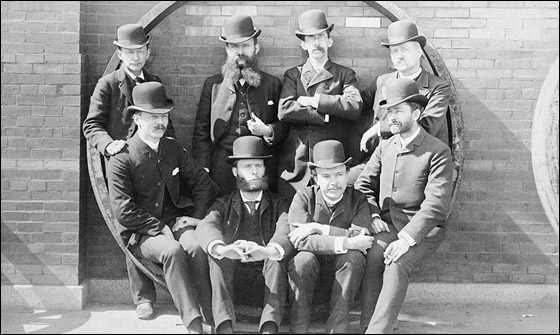Today in Smithsonian History: May 7, 1889

The Vertebrate Paleontology Hall, or Dinosaur Hall, in the U.S. National Museum’s Natural History Building. At the time of this picture (ca. 1930), the exhibit of dinosaur skeletons and models was called the “Hall of Extinct Monsters.” A papier mache reproduction of a Stegosaurus is at the center and the skeleton of a Triceratops excavated by John Hatcher is behind it. (Photographer unknown, but a note on the photo refers to “Gazin” (Charles Lewis Gazin), who in 1932 became a curator in the Division of Vertebrate Paleontology.
May 7, 1889 John B. Hatcher, an assistant to the famous paleontologist, O. C. Marsh, professor at Yale University and vertebrate paleontologist for the U.S. Geological Survey, visits a fossil site at the bottom of deep canyon on a ranch in Converse (now Niobrara) County in Wyoming. There he finds the the remains of a creature that Marsh would name Triceratops. Over the next several years, Hatcher excavated the fossils, which became part of the collections of the U.S. National Museum (now the National Museum of Natural History.)
The Natural History Museum’s Division of Paleobiology seeks to increase public and scientific understanding of the biological and environmental history of Earth through the study of fossil animals, plants, and protists. In addition to performing scientific research, Smithsonian scientists assemble and curate fossil collections that are studied by colleagues from around the country and the world. We exhibit extraordinary fossils in the public spaces of our Museum and we help train future generations of paleontologists.
Courtesy of Smithsonian Institution Archives
Posted: 8 May 2016
- Categories:





